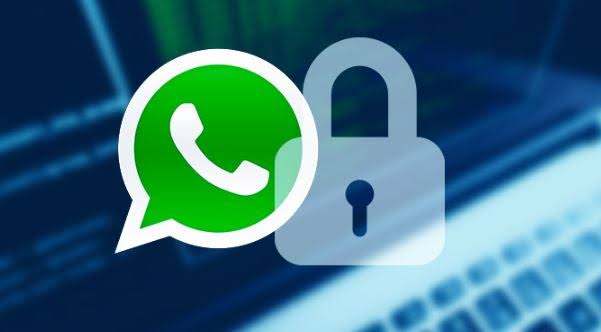How to Protect Your WhatsApp Account from Hackers

With over 2 billion users globally, WhatsApp is a prime target for hackers. To keep your personal information, conversations, and contacts safe, it’s essential to secure your WhatsApp account. This guide will walk you through the steps needed to protect your account from being hacked.
1. Activate Two-Step Verification
Two-step verification adds an extra layer of protection to your WhatsApp account by requiring a PIN in addition to the SMS verification when setting up the app on a new device.
Steps to Activate Two-Step Verification:
- Open WhatsApp and navigate to Settings.
- Tap on Account and select Two-step verification.
- Tap Enable and choose a six-digit PIN.
- Optionally, you can add an email address for recovering your account if you forget your PIN.
Importance: Even if someone gains access to your SIM card, they won’t be able to activate WhatsApp on a new device without your PIN.
2. Be Wary of SMS Verification Codes
A common way hackers take over WhatsApp accounts is by tricking users into sharing their SMS verification code.
What You Should Do:
- Never share your WhatsApp verification code with anyone, even if they claim to be from WhatsApp support.
- If you receive an unsolicited request for your code, ignore it and report the number if necessary.
Importance: Sharing this code allows hackers to set up your WhatsApp account on their own device.
3. Strengthen SIM Card Security
SIM swapping is a method used by hackers to gain control of your phone number, which they can then use to access your WhatsApp account. Protecting your SIM card is crucial.
How to Protect Your SIM Card:
- Set up a SIM PIN by contacting your mobile carrier for instructions on how to secure your SIM card with a PIN.
- Utilize additional security features provided by your carrier, such as requiring a PIN or password for any changes to your account.
Importance: Securing your SIM card prevents hackers from receiving your WhatsApp verification codes.
4. Regularly Check Active Sessions
WhatsApp Web allows you to use WhatsApp on a computer. However, if you leave your account logged in on a shared or unfamiliar device, others could gain access to your messages.
How to Monitor and Log Out of Active Sessions:
- Open WhatsApp and go to Settings.
- Tap on Linked Devices to view all active sessions.
- Review the devices listed, and if you see any that you don’t recognize, log them out immediately.
Importance: Keeping track of where your WhatsApp is logged in helps prevent unauthorized access to your account.
5. Stay Alert for Phishing Scams
Phishing scams involve hackers pretending to be trusted entities to trick you into revealing sensitive information, such as your WhatsApp credentials.
How to Protect Yourself:
- Verify the source of any communication that requests your WhatsApp information.
- Avoid clicking on suspicious links or downloading attachments from unknown sources.
- Look out for signs of phishing, like poor grammar, urgent requests, or unfamiliar URLs.
Importance: Falling for a phishing scam can lead to your account being compromised without your knowledge.
6. Avoid Using Public Wi-Fi for Sensitive Tasks
Public Wi-Fi networks are often less secure and can be vulnerable to attacks that intercept your data, including your WhatsApp messages.
What to Do:
- Use a virtual private network (VPN) when connecting to public Wi-Fi to encrypt your internet connection.
- Refrain from logging into WhatsApp or other sensitive accounts when using public Wi-Fi networks.
Importance: Protecting your connection helps prevent hackers from intercepting your data over unprotected networks.
7. Keep Your App and Device Up-to-Date
Regular updates often include security fixes that protect against the latest vulnerabilities and threats.
How to Stay Updated:
- Enable automatic updates for WhatsApp through your device’s app store settings.
- Regularly check for software updates on your device to ensure it has the latest security features.
Importance: Using the latest versions of WhatsApp and your device’s operating system helps protect against newly discovered security vulnerabilities.
8. Control Who Can See Your Personal Information
WhatsApp allows you to control who can view your profile photo, status, last seen, and about information. Limiting access to this information can help protect your account.
How to Adjust Privacy Settings:
- Go to Settings > Privacy.
- Choose who can see your personal information by selecting from Everyone, My Contacts, or Nobody.
Importance: Reducing the visibility of your personal information can make you less likely to be targeted by hackers.
9. Log Out from Devices You No Longer Use
If you switch to a new phone or use WhatsApp on a temporary device, make sure to log out from the old device.
How to Log Out:
- If you don’t have access to the old device, you can unlink it from your account by going to Settings > Linked Devices.
Importance: Logging out from devices you no longer use helps prevent unauthorized access if the device is lost, stolen, or sold.
10. Stay Informed and Educate Yourself
Keeping up with the latest threats and best practices for online security is one of the most effective ways to protect your account.
What to Do:
- Follow credible security blogs and news sources.
- Regularly review WhatsApp’s security updates and guidelines.
Importance: Staying informed about potential threats allows you to protect your digital life and keep your WhatsApp account secure.
Securing your WhatsApp account requires a proactive approach, including enabling two-step verification, being cautious with verification codes, and keeping your app updated. By following these steps, you can significantly reduce the risk of your account being hacked, ensuring that your personal information and conversations remain safe.
























